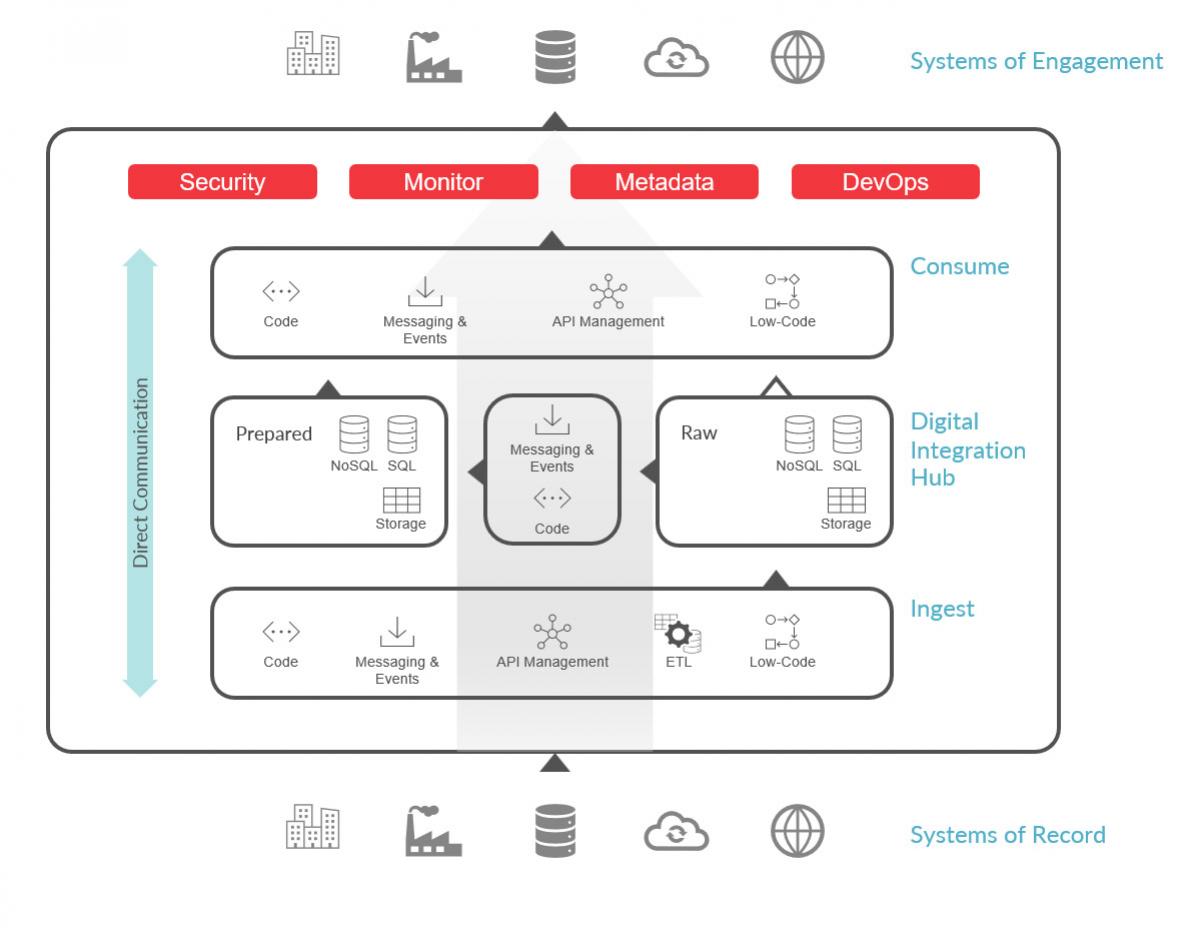This blog post is number 2 in my series of defining the heart of your digital business. If you missed the first one check it out here
A Digital Integration Hub (DIH) is a platform that allows organizations to connect their various systems, applications, and data sources, enabling seamless data exchange and integration. It acts as a central point for data ingestion, transformation and distribution, providing a unified view of data across the enterprise.
The biggest difference from an Enterprise Service Bus (ESB) or an Integration Platform as a Service (iPaaS) and the Digital Integration Hub (DIH) is the ability to persist, aggregate and combine data for later use and exposure to 3rd party system for instance using APIs, events or classic push of data.
Below is the architecture we usually use to build our DIH:

Bridging the gap
At its core, a DIH is a middleware layer that bridges the gap between different systems and applications, enabling them to communicate with each other in a standardized way. It provides a set of APIs and connectors that allow organizations to easily integrate new applications and data sources into their existing systems.
A DIH typically includes the following components:
- Data ingestion: This involves the collection of data from various sources, such as databases, applications, and IoT devices.
- Data transformation: This involves converting the data into a standardized format so that it can be easily shared and understood by different systems.
- Data storage: This involves storing data and transactions in either the source format or a prepared format in what is called a process format (more on this in a later post)
- Data distribution: This involves delivering the data to the appropriate systems, applications, and users.
Increased agility and reduced costs
The digital integration hub can use all or parts of the architecture for specific integration I e, you don’t always need to persist data (although you often would want to).
A DIH can be deployed on-premises or in the cloud, and it can be customized to meet the specific needs of an organization. Some of the key benefits of a DIH include increased agility and implementation speed, reduced costs, improved data quality, and enhanced data governance. With the data in integration storage, you also get the benefits of exposing near realtime data from slow performing systems and at the same time protects the systems of integration request overload.
Next time I will dive into more details of why your business would want to invest in a DIH.



